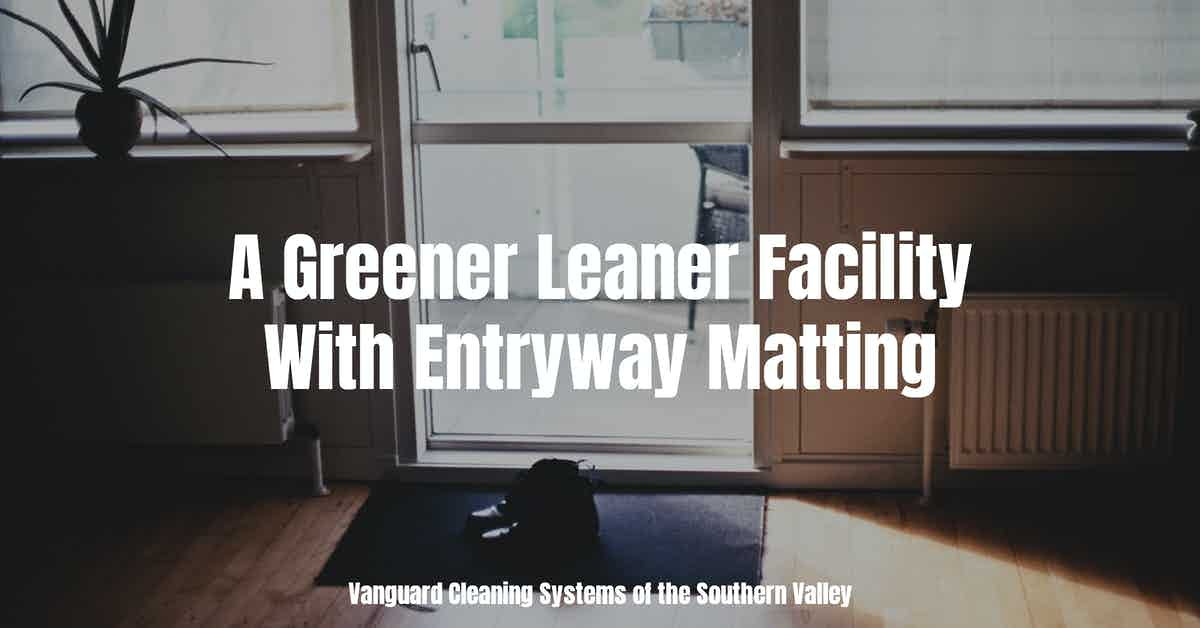A primary contributor to poor occupant health is low-quality indoor air which is directly impacted through the introduction of toxic cleaning chemicals and outdoor soil and contaminants--both of which can be reduced through the strategic placement of entryway and walkway matting.

Indoor Environment Quality Impacts Human Health and Performance
Indoor air/environment quality directly impacts a person's comfort, health, and capacity to work.
Telltale signs of poor indoor environment quality--often called sick building syndrome--typically include musty smells, influenza-like symptoms, the onset of allergic reactions and asthma attacks, and several life-threatening diseases.
According to the US Occupational Safety and Health Administration (OSHA);
People working in buildings with poor IAQ may notice unpleasant or musty odors or may feel that the building is hot and stuffy.
Some workers complain about symptoms that happen at work and go away when they leave work, like having headaches or feeling tired.
Fever, cough, and shortness of breath can be symptoms of a more serious problem.
Asthma and some causes of pneumonia (for example, Legionnaires’ Disease and Hypersensitivity Pneumonitis) have been linked to IAQ problems.
If you have symptoms that are not going away or are getting worse, talk to your doctor about them.
But not all exposures cause symptoms, so there is no substitute for good building management.
Conversely, studies have demonstrated the positive impact high indoor environment quality has on students and worker's cognitive and physical performance.
According to one study conducted in controlled office spaces Syracuse University’s Total Indoor Environmental Quality Laboratory;
On various days the experimenters would alter ventilation rates and levels of CO2 and VOCs.
Each afternoon the volunteers were tested on their ability to think analytically and react to a crisis.
The results were dramatic.
When volunteers worked in well-ventilated conditions (which lowered the levels of CO2 and VOCs), they scored 61% higher than when they worked in typical office building conditions.
When they worked in the cleanest conditions, with even lower CO2 levels and higher ventilation rates, their scores climbed 101%.
In a separate, related study, researchers recruited 109 volunteers from 10 office buildings in the US--six of which had been renovated to improve factors impacting indoor environment quality.
According to Science magazine;
[The] team gave each office worker a Fitbit-like bracelet to record heart rate, skin temperature, sleep patterns, and other physiological signs of well-being.
Workers also completed a survey each day about how comfortable they felt and whether they experienced symptoms such as drowsiness or headaches.
At the end of the week, they took the cognitive tests. Workers in the buildings with good ventilation and lower levels of indoor pollution scored 26.4% higher than those in the unimproved buildings.
They also reported sleeping better and experiencing fewer “sick building” symptoms.
Enhancing Occupant Health and Performance Through Green Cleaning Practices and High-Performance Entryway Matting
Factors that adversely affect indoor environment quality include:
- Chemicals, including commercial and consumer cleaning products.
- Poor ventilation.
- Dampness and moisture due to leaks, spills, and humidity, and;
- Outdoor air and soil contaminants.
Source control--eliminating the introduction of these contributing factors from the environment--is a proven method for cost-effectively improving indoor environment quality and occupant health and performance.
One of the primary routes of contaminant introduction into a building is on the bottom of occupant shoes.
Research has demonstrated the strategy of zoned matting placement, approximately 30 ft. in length, starting outside of the building, going through the main entrance, and into the lobby, will reduce the soil and contaminant brought into a facility by nearly 100%
The International Sanitary & Supply Association recommends that commercial buildings use a minimum of 30 linear feet of entrance matting to remove 100 percent of contaminants from footwear and prevent them from entering a building.
It is widely accepted that these 30 linear feet be divided into three separate zones, each with different matting requirements.
Eliminating a primary source of soil and contaminant introduction into a building reduces the amount of cleaning and the associated volume of chemicals required to maintain a high level of hygiene and safety--effectively reducing a second source of indoor air pollution.
Switching to green cleaning detergents certified by a third party, such as the EPA's Safer Choice or the EWG Verified program, combined with targeted fomite disinfection, will further reduce the volume of chemical contaminants released into the air.
Increasing indoor air ventilation combined with improved HVAC filtration and commercial-grade air cleaners will eliminate many of the airborne particles that remain and serves the dual function of helping to combat the spread of airborne pathogens, specifically SARS-CoV-2.
Finally, employing high-quality custodial services throughout the facility, specifically highly in demand day porter services, will help reduce issues with spills and moisture while increasing your organization's visible efforts to maintain facility hygiene and occupant health--a critical factor for many returning office workers and anxious shoppers and diners.
Takeaway
Improving indoor environmental quality through the strategic placement of high-performance entryway matting and combining that with enhanced green cleaning and targeted disinfection services is a proven method for decreasing facility maintenance costs and health-related issues while improving human health and performance.
Outsourcing is a proven method for quickly onboarding highly in-demand custodial and facilities maintenance services at a fraction of the cost of managing a similar service in-house.
If you would like more information regarding the effectiveness of high-performance infection prevention and control measures, or if you would like to schedule a free, no-obligation onsite assessment of your facility's custodial needs, contact us today for a free quote!
In Bakersfield, CA, call (661) 437-3253
In Fresno, CA, call (559) 206-1059
In Valencia CA, or Santa Clarita CA, call (661) 437-3253
In Palmdale, CA or Lancaster, CA, call (661) 371-4756

